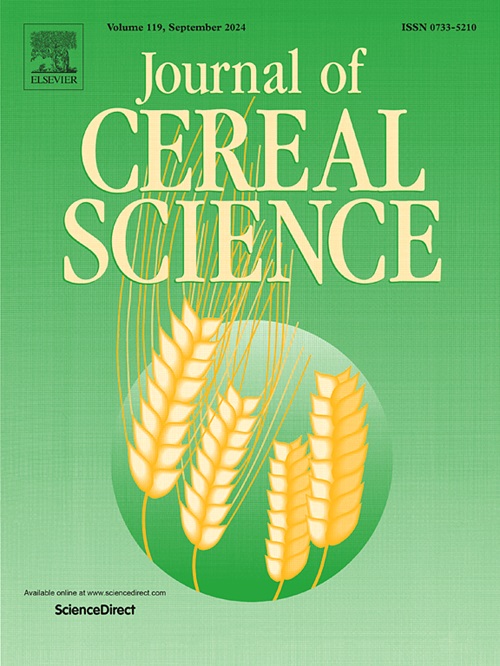How to regulate retrogradation behavior of wheat starch after different amylases: Structural analysis
IF 3.7
2区 农林科学
Q2 FOOD SCIENCE & TECHNOLOGY
引用次数: 0
Abstract
How the differences in the structure of active cavities of α-amylase, β-amylase and Maltotetraose-forming amylase affect their binding modes to starch chains was investigated in depth. Meanwhile, the aim of this study was also to analyse how the differences in binding modes change the structure of starch and ultimately influence starch retrogradation properties. Molecular docking analyses showed that Maltotetraose-forming amylase had a larger active cavity (1202.69 A3) and greater quantities of aromatic amino acids, which facilitated the recognition of amylopectin chains and the binding energy to starch of up to −6.6 kcal/mol, indicating a stronger binding capacity. It was observed that Maltotetraose-forming amylase more readily recognized the surface of starch granules and effectively decreased the thickness of crystalline layer and the contents of B1-B3 chains by breaking glycosidic bonds. In addition, the higher the binding energy between amylase and starch chains, ultimately led to a negative correlation with the rate of starch retrogradation.
不同淀粉酶对小麦淀粉降解行为的调控:结构分析
深入研究了α-淀粉酶、β-淀粉酶和麦芽糖四糖形成淀粉酶活性空腔结构的差异对它们与淀粉链结合方式的影响。同时,本研究的目的还在于分析结合模式的差异如何改变淀粉的结构,并最终影响淀粉的降解性能。分子对接分析表明,形成麦糖四糖的淀粉酶具有更大的活性腔(1202.69 A3)和更多的芳香氨基酸,有利于支链淀粉链的识别,对淀粉的结合能高达−6.6 kcal/mol,表明其结合能力更强。结果表明,麦芽糖四糖形成淀粉酶更容易识别淀粉颗粒表面,并通过破坏糖苷键有效地降低结晶层厚度和B1-B3链的含量。此外,淀粉酶与淀粉链之间的结合能越高,最终导致淀粉的降解速率与淀粉酶的降解速率呈负相关。
本文章由计算机程序翻译,如有差异,请以英文原文为准。
求助全文
约1分钟内获得全文
求助全文
来源期刊

Journal of Cereal Science
工程技术-食品科技
CiteScore
7.80
自引率
2.60%
发文量
163
审稿时长
38 days
期刊介绍:
The Journal of Cereal Science was established in 1983 to provide an International forum for the publication of original research papers of high standing covering all aspects of cereal science related to the functional and nutritional quality of cereal grains (true cereals - members of the Poaceae family and starchy pseudocereals - members of the Amaranthaceae, Chenopodiaceae and Polygonaceae families) and their products, in relation to the cereals used. The journal also publishes concise and critical review articles appraising the status and future directions of specific areas of cereal science and short communications that present news of important advances in research. The journal aims at topicality and at providing comprehensive coverage of progress in the field.
 求助内容:
求助内容: 应助结果提醒方式:
应助结果提醒方式:


